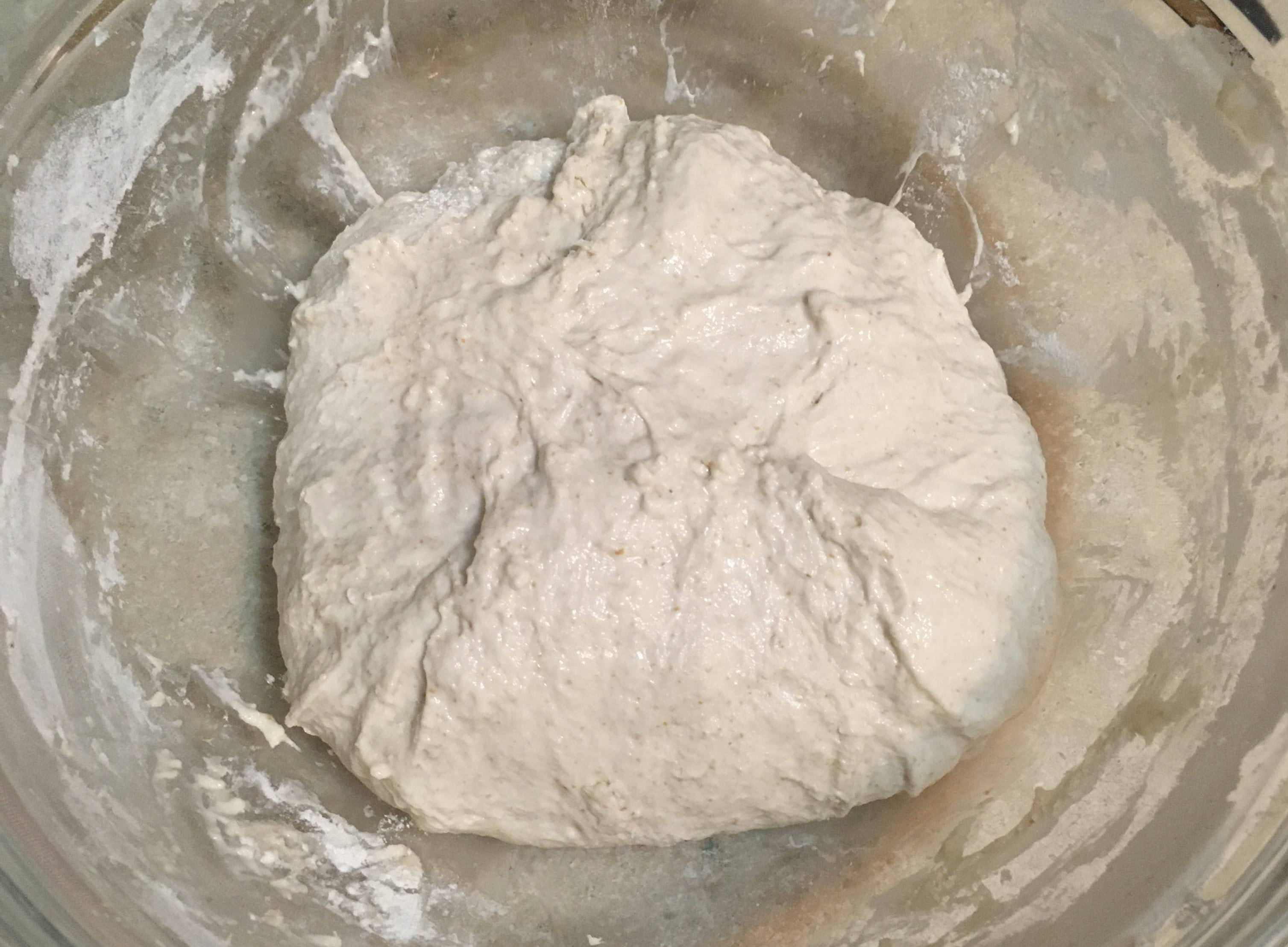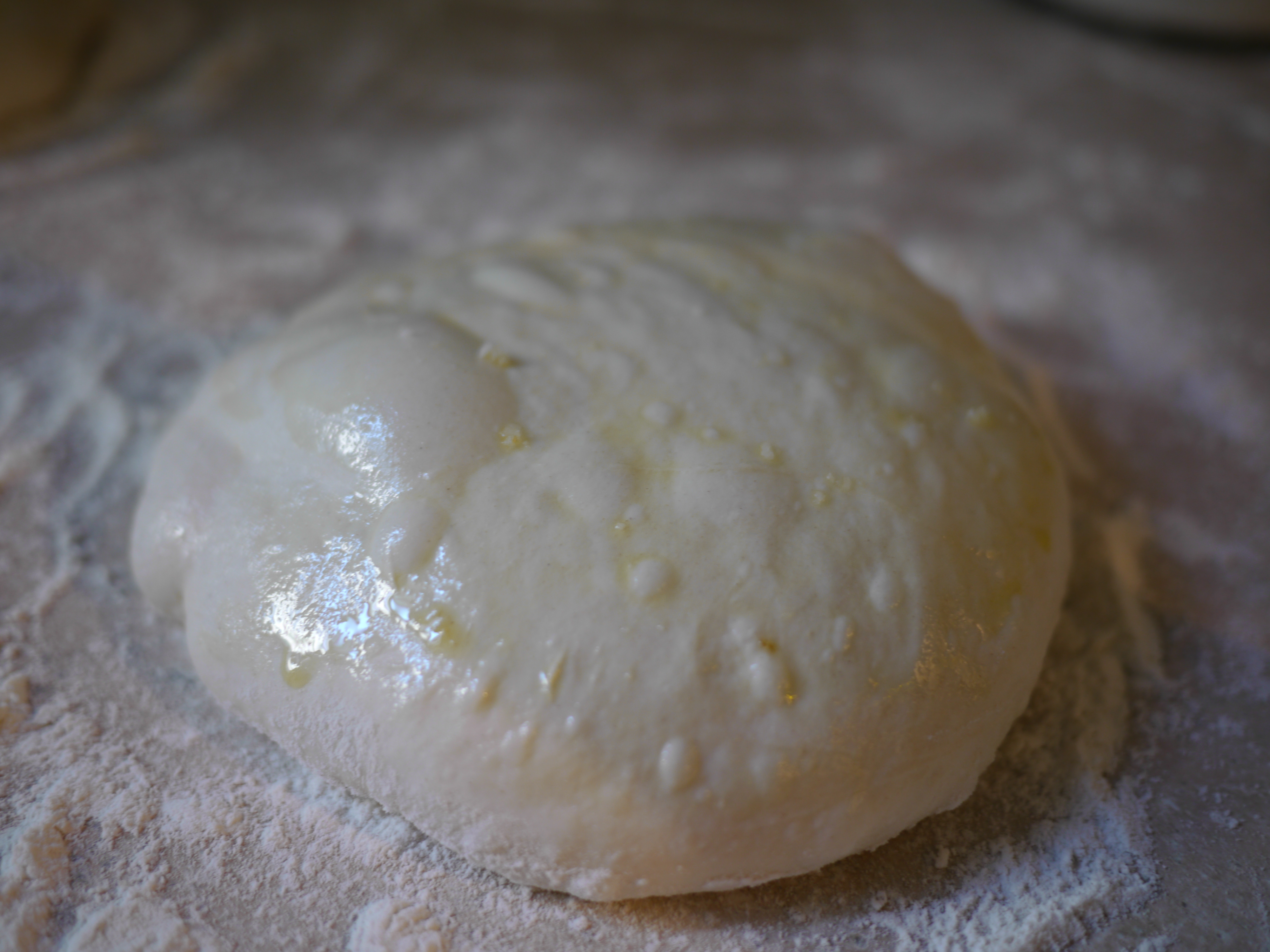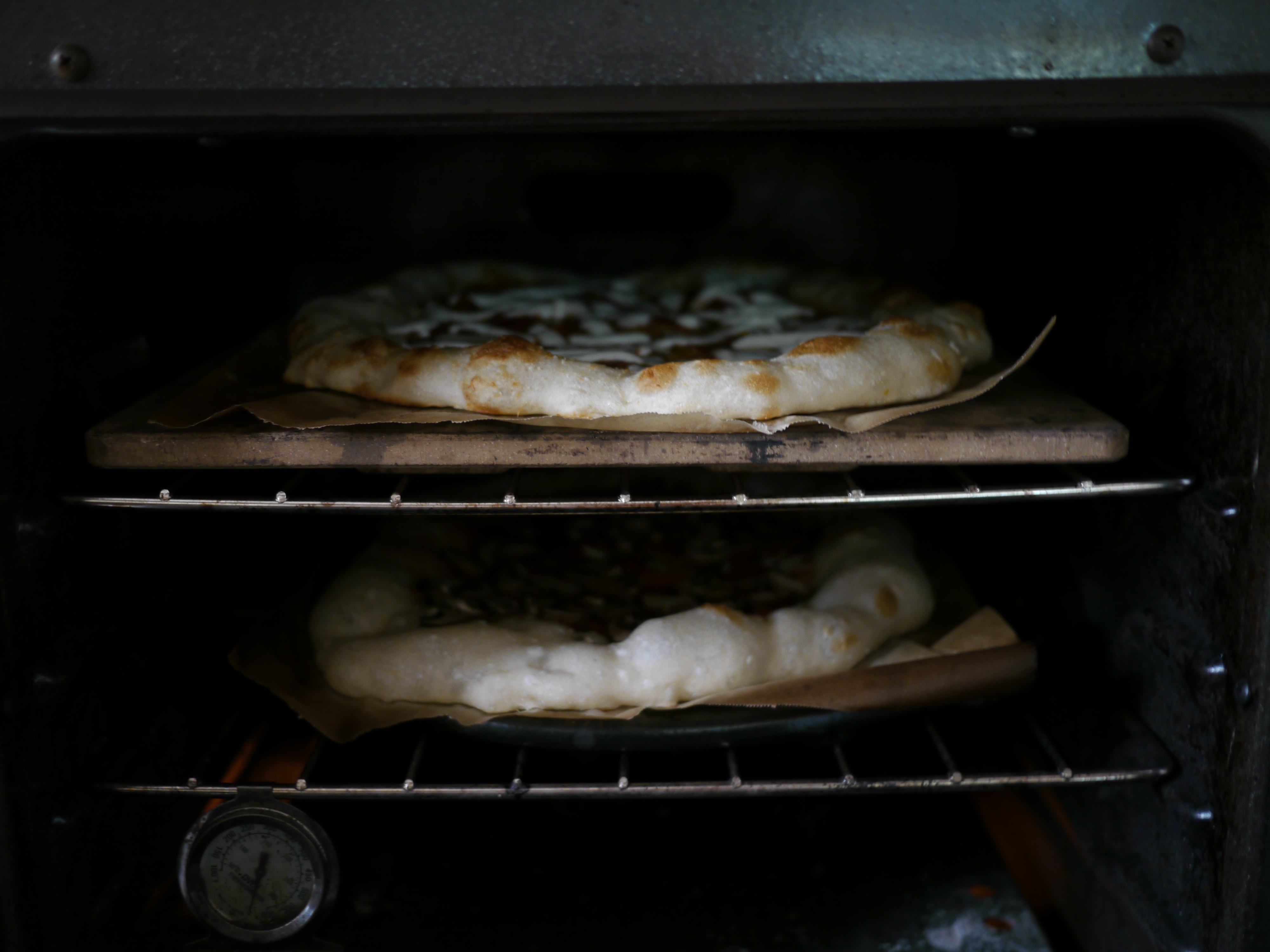Recipe
 Prosciutto and arugula pizza.
Prosciutto and arugula pizza.
This recipe makes two 13-14” round pizzas. This is a naturally leavened, high hydration pizza recipe. It came about from playing with a Sullivan St Bakery recipe. The dough ends up around 80% hydration.
Ingredients:
- 400 g (3 cups) hi-gluten flour (sub with bread flour or AP flour)
- 330 g (1 1/2 cups) water
- 100 g (~1/2 cup?) of biga
- 8 g (1 tsp) fine salt
- 8 g (1 tsp) sugar
Equipment:
- 2 mixing bowls
- spatula or dough scraper
- bench scraper
- parchment paper
- pizza stone
- ideally, a kitchen scale
In a bowl, whisk the flour, salt and sugar together. In a big bowl, whisk the water and the biga together until it is frothy. Using a spatula or dough scraper, slowly work the flour into the water. Stop once the dough is all sticking together. It should look lumpy and wet.

bulk rise
Cover it with a towel or put a plastic shopping bag around the bowl. For every half hour over the next two hours (4 times), you are going to fold the dough. This builds strength. After the second or third fold, the dough should be staying together and be noticeably less sticky.
When you’ve finished folding, you have two options: - if you want to eat it soon, let the dough rise at room temp for another 3-5 hours - if you want to make it tomorrow, put it in the fridge. Depending on the fridge temperature, your fermentation time will differ, but generally it’s about four to five times as long - so 12-25 hours.
Note: the rise volume is more important than the timing.
At this stage, the goal is for the dough to rise by about 1/3 to 1/2 - so if you have 1 Liter of dough, you want it to expand to 1.33 - 1.5 L before the second rise.
second rise
In this step, the dough is shaped into balls, where it will complete its rise for 1-3 hours. The dough should be noticeably bubbly, jiggly, and holding together.
shaping
If you haven’t shaped dough before this video is really helpful. Lightly flour a work surface and the top of the dough. Dump the dough onto the surface. Using a bench scraper, cut the dough in half. Take one half of the dough. Take one quadrant of it, gently pull it outwards and fold it into the middle. Repeat this four times on the other quadrants, and then flip the dough over. Using the bench scraper, push the dough out and pull it in with the scraper, forming tension on the top half. The dough should be sticking to your work surface slightly to aid in forming a taught gluten membrane along the top.
Once the dough has some nice surface tension and is holding its ball shape, plop it onto a little bit of flour. Alternately, you can put it directly on a floured sheet of parchment paper. Drizzle some olive oil on top and lightly massage it along the top (use a brush if you want). Sprinkle a few salt flakes on top.
Repeat this process with the second half of the dough.
Over the next 1-3 hours, these balls should expand to 1.5-2x their size. Depending on the humidity, you may want to cover them during this time, but often it’s not necessary because of the oil coating.

Cooking
30 minutes to 1 hour before cooking, put the stone in the oven and turn it up to 500 F.
Form a ring by gently pushing your fingers into the center of the dough ball. Grab the dough from below with two hands and carefully place it on floured parchment paper if you haven’t already. Stretch the dough out on the paper and dock it (push your fingertips into it).

Margherita pizza
Make a simple sauce with a can of San Marzano tomatoes, basil and salt to taste. Simmer for about 20 minutes.
Put tomato sauce on the dough sparingly - just enough to cover it. Drizzle with olive oil. Put it in the oven and cook for 5 minutes. After 5 minutes, pull it out and quickly place strips of mozzarella on top. Cook for another 3-5 minutes until it looks delicious. Take it out and grate some Parmigiano-Reggiano on top. Garnish with basil leaves.

Biga Recipe
A biga is just a stiff starter.
This one is 70% hydrated.
It is made with AP flour and water.
If you haven’t kept a sourdough starter before, read this guide or a similar one.
For the biga, feed it AP or hi-gluten flour instead of rye or whole wheat flour, and use less water.
I usually feed mine 100 g of flour and 70 g of water.
You want to use it when it is “activated”, i.e. as soon as it has doubled in size after feeding.

Notes
- Play with the hydration. I’ve done it as high as 350 g of water and as low as 320 g. The higher the hydration, the more difficult the dough is to work with; but, you can get a very chewy, glossy texture that will hold up to the relatively long baking times required for pizza in a home oven.
- If your oven has hot spots like mine, you may need to rotate it every couple minutes to cook evenly.
- If, like me, you like to have a charred finish, you may be able to achieve one with your broiler, especially if it is an open flame broiler. To do so, take the pizza out a minute early and place directly under the broiler for ~15 seconds. Keep an eye on it because it can easily burn.